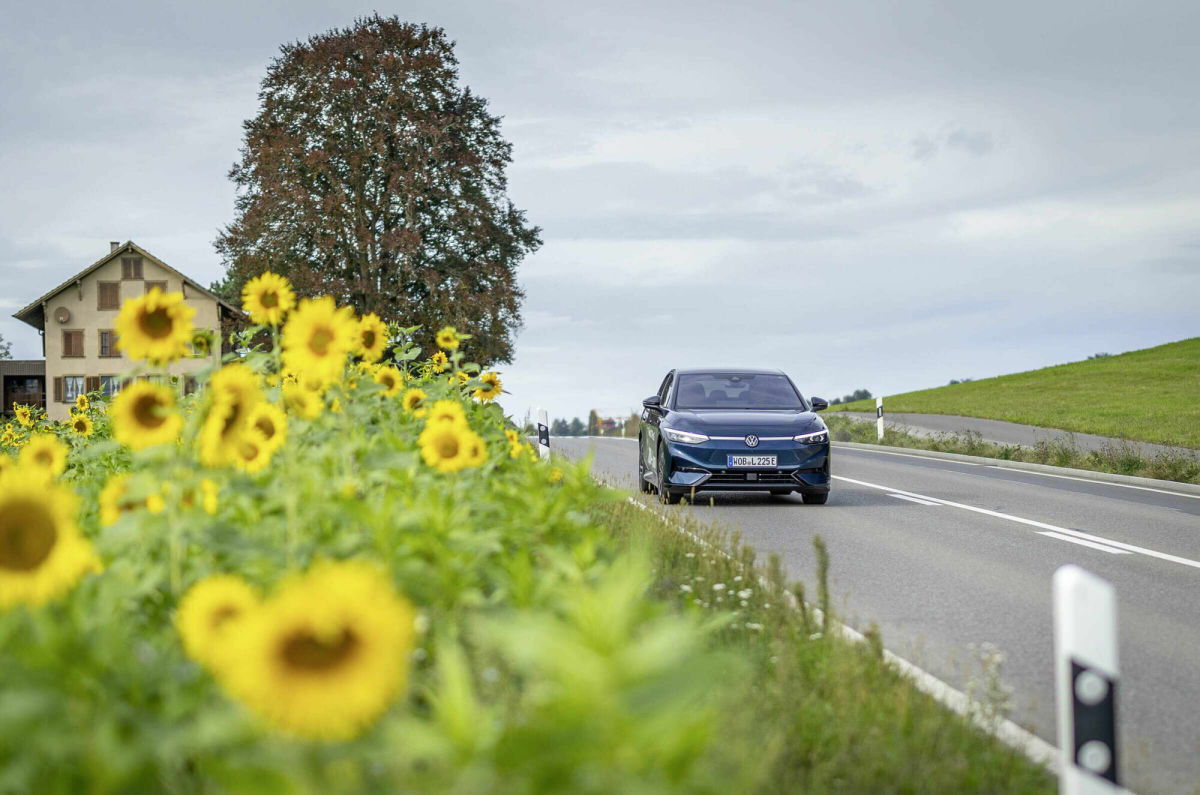The Volkswagen ID.7 is the German marque’s latest all-electric sedan that the U.S. is slated to see on our roads soon. The car has already been on sale in Europe since last year but VW is delaying its arrival on Yankee shores in light of impending doom surrounding its native workforce.
Related: Jaguar reveals its future with the polarizing Jaguar Type 00
Volkswagen is experiencing strong demand for the ID.7 overseas, bolstered by the accolades it has received. Adding to its appeal is the Pro S variant, which now stands as the most efficient model in the lineup, recently achieving an impressive range of 794 kilometers on a single charge.
The ID.7’s feat places it in the upper echelon of high-range American EVs
That works out to about 493 miles, setting a new EV range record for VW. It also puts the ID.7 in rare company with the Lucid Air Grand Touring here in the U.S. Besides Lucid, EVs in North America are typically rated with an EPA range somewhere in the 300s to low 400s, giving Volkswagen a potential leg up.

It should be noted that while the European WLTP cycle rated the ID.7 Pro S at a combined range of 709 km, or 440 miles, their criteria are more optimistic than America’s EPA range standards,
So how did VW achieve such a figure? The ID.7 Pro S was driven on a route covering 81 km (50 miles) in the city of Zug, located just south of Zurich, Switzerland. The route profile comprised of through-roads, highway sections, and country roads with hills. This was a controlled circuit designed to mimic everyday driving, with VW claiming the record was achieved during the day in normal traffic flow in the middle of last week.
Related: The 2025 Lexus RZ has a much lower starting price than the outgoing model
Volkswagen achieved high-efficiency thanks in part to its design

Eight different drivers took part in the effort to take the ID.7 to its maximum range over two days, averaging almost 32 miles per hour throughout the entire journey. This is thanks to the ID.7’s extremely low drag coefficient of just 0.23 and its low electricity consumption of 10.3 kilowatt-hours per 100 km, again beating the WLTP estimate of 13.6kWh/100 km.
Volkswagen
To ensure fairness, the VW ID.7 Pro S used to achieve the distance was a variant that VW claims featured optional equipment that was ‘most range-favorable’. That doesn’t mean it’s bare-bones, however, as it was equipped with the Comfort package, IQ.Drive assist systems package, the Plus exterior, and a heat pump.
These features, combined with driving techniques in a controlled environment helped blow the WLTP estimate out of the water and showed what modern battery technology can achieve.
An optional Electric Vehicle Route Planner is also helpful in calculating the most efficient route and monitoring the current electric range and available charging stations along the way.
Final thoughts

The version of the ID.7 that will make its way to the U.S. is still somewhat of a mystery. We will reportedly get an 82-kWh usable battery pack with a rear-mounted electric motor with an EPA rating of over 300 miles. It was supposed to arrive earlier this year but that has not been the case.
To see VW refining its battery tech midst of local corporate turmoil means it’s yielding positive results. When it finally does make landfall, we’ll get a better ID.7 than the one Autoblog drove a year ago.
Related: Volkswagen’s 2026 reset: New designs, hybrid focus, and high stakes

